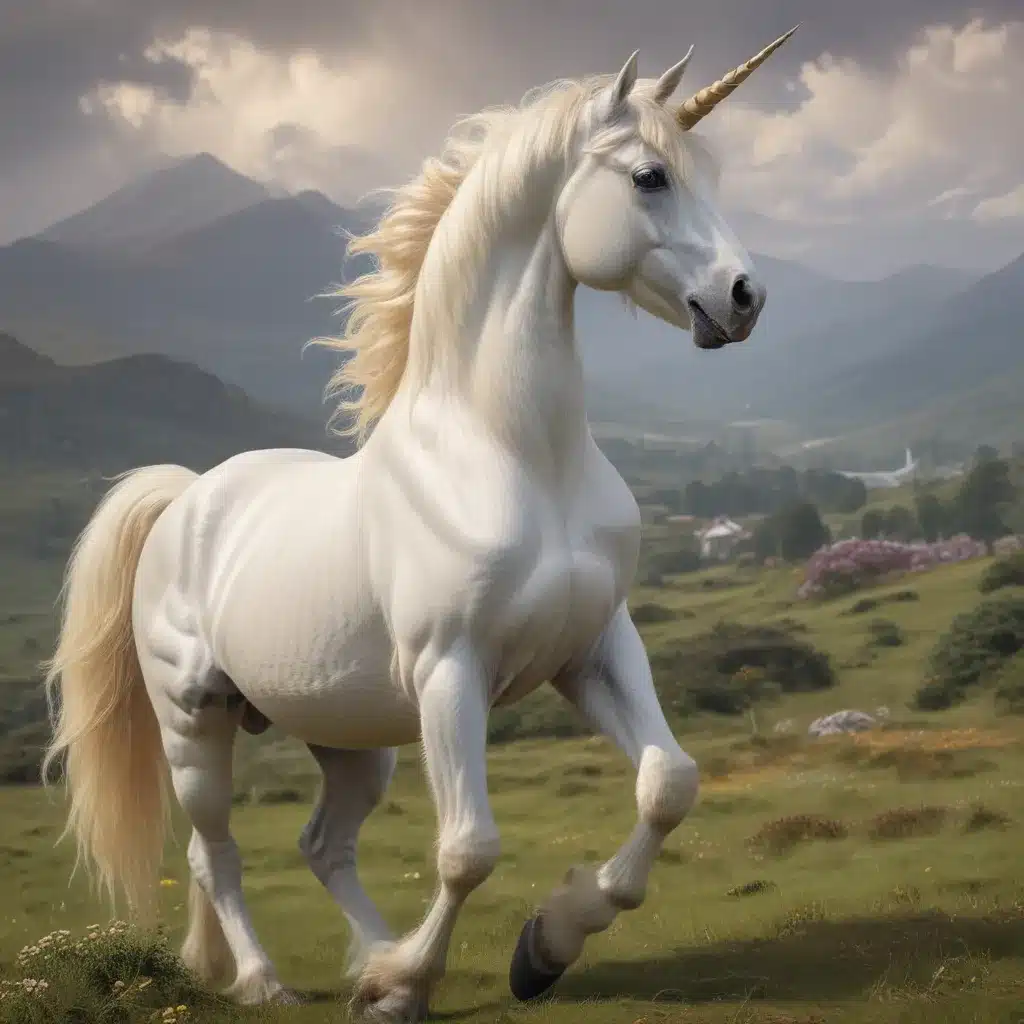
A Mystical Creature Takes the Throne
You know, when I think about Scotland and all the cultural symbols, legends, and rich heritage of the country, the first thing that usually comes to mind is the mighty thistle, the iconic tartan, or even the enigmatic Loch Ness monster. But did you know that Scotland’s true national animal is actually a mystical creature straight out of a fairytale – the unicorn?
That’s right, the unicorn, a symbol of purity, innocence, power, and ferocity, has been firmly tied to Scotland for centuries. Across the rolling hills and ancient castles of this enchanting land, the unicorn’s presence is impossible to ignore. From the gates of Holyroodhouse to the carvings of St. Giles Cathedral, this majestic one-horned beast is woven into the very fabric of Scottish identity.
Taming the Untamable
The love affair between Scotland and the unicorn dates back to the Middle Ages. In Celtic mythology, the unicorn was revered as a proud, untamable creature – much like the Scots themselves. Legend has it that only a king possessed the strength to hold a unicorn captive, a testament to the power and nobility of the Scottish monarchy.
As the National Trust for Scotland explains, the first recorded use of the unicorn symbol was in the 12th century, when it was adopted by King William I on the royal coat of arms. And by the 15th century, under the reign of King James III, unicorns were even appearing on the country’s coinage.
But the unicorn’s true significance as Scotland’s national animal solidified during the reign of King James VI in the early 17th century. When James VI inherited the English throne, becoming James I of England, he cleverly incorporated the unicorn into the royal coat of arms, symbolizing the unity between the two countries. However, the Scottish version always maintained the unicorn as the dominant figure, a testament to the enduring spirit of this mystical beast.
Unicorn Sightings Across Scotland
So, where can you spot these elusive creatures in the land of kilts and castles? Well, as it turns out, unicorns are hiding in plain sight all over Scotland!
According to Historic UK, a true unicorn-lover’s paradise can be found in Edinburgh. From the heraldic shield at the gates of Holyroodhouse to the ornate wood carvings of St. Giles Cathedral, the unicorn’s presence is impossible to miss. And don’t forget to keep an eye out for the iconic Mercat Crosses in towns and cities across the country – these historic landmarks often feature the mythical creature proudly perched atop.
But the unicorn’s influence extends far beyond the capital. Scotland Shop recommends checking out the ‘Hunt of the Unicorn’ tapestries at Stirling Castle, as well as the majestic unicorn figurehead of the HMS Unicorn in Dundee. And if you venture further north, you might even stumble upon some unique examples of Scottish unicorn heraldry at places like Delgatie Castle and Fyvie Castle.
Unicorns and Kelpies: Mythical Beasts of Scotland
Of course, the unicorn isn’t the only mythical creature that has captured the imagination of the Scottish people. The kelpie, a shape-shifting water spirit often depicted as a horse, is another integral part of the country’s rich folklore.
Unlike the pure, noble unicorn, the kelpie is a darker, more sinister figure – luring unsuspecting travelers to their watery doom. As Scotland Shop explains, these shape-shifting spirits were once believed to be the result of ancient human sacrifices to water gods. And while the kelpie’s origins may be more ominous, their legacy lives on in the form of the iconic Kelpies sculptures in Falkirk, which stand as a gateway to the Forth and Clyde Canal.
So whether you’re captivated by the majestic unicorn or intrigued by the deceptive kelpie, one thing is clear – the mythical beasts of Scotland have woven themselves into the very fabric of this enchanting country. And who knows, if you keep your eyes peeled during your next visit to Loch Ness Shores, you might just spot a unicorn or two…or maybe even a certain elusive monster!

